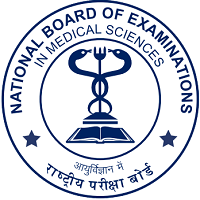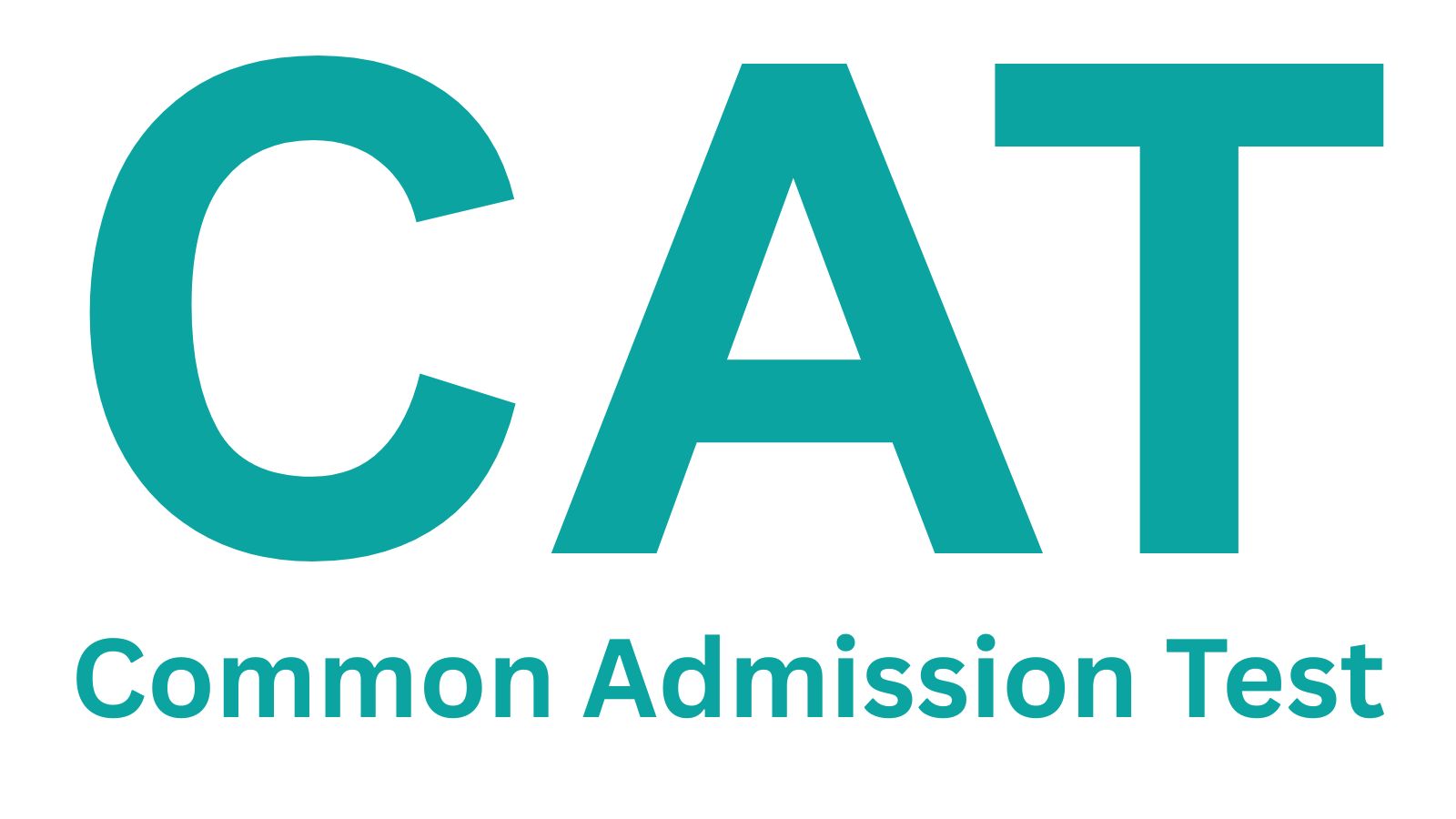XAT Latest Updates
- XAT 2026 Registration is Ongoing till December 5, 2025. Read More
- XAT 2026 Admit Card Download Starts on December 20, 2025. Check Here
- XAT 2026 Exam Scheduled on January 4, 2026
XAT Syllabus 2026 consists of four sections: Quantitative Aptitude & Data Interpretation (QA & DI), Verbal Ability & Logical Reasoning (VA & LR), Decision Making (DM), and General Knowledge (GK). The exam tests candidates on mathematical ability, logical thinking, reading comprehension, ethical decision-making, and awareness of current affairs.
XAT QA & DI section covers important topics like Arithmetic, Algebra, Geometry, and Data Interpretation. Candidates need strong problem-solving skills to excel in this section. XAT VA & LR section focuses on reading comprehension, grammar, critical reasoning, and logical patterns. Good vocabulary and analytical thinking help in scoring well. In this article you can learn about the section-wise overall syllabus details and topic-wise syllabus PDF download links.

The Decision Making section in XAT Syllabus evaluates candidates' ability to solve real-life business and ethical scenarios. It requires critical thinking and case study analysis. The General Knowledge section includes current affairs, business news, economy, politics, and static GK. Regular reading of newspapers and magazines is essential for this section.
XAT 2026 exam pattern consists of 95 questions with a structured marking scheme. Each correct response will have +1 mark, while there is negative marking for incorrect answers. Unattempted questions beyond eight also carry a penalty. The General Knowledge section does not have negative marking.
Candidates, preparing for XAT 2026 exam, should focus on XAT important topics in each section and follow a structured study plan. Using recommended books, practicing mock tests, and analysing past papers can improve performance. A strategic preparation approach will help aspirants achieve a high percentile in XAT 2026.
XAT Syllabus 2026: Highlights
XAT 2026 exam consists of different sections that assess candidates on various skills. The table below provides an overview of the sections and the topics covered in each:
| XAT 2026 Sections | XAT 2026 Topics Covered |
| Quantitative Ability & Data Interpretation | Algebra, Percentage, Bar Diagrams, Surds and Indices, Geometry, Pie Charts, Mensuration, Arithmetic, Tables, Data Interpretation, etc. |
| Verbal & Logical Reasoning | Analogy, Critical Reasoning, Grammar, Verbal Reasoning, Parajumble, Reading Comprehension, Fill in the Blanks, etc. |
| Decision Making | Caselets, Premises, Grouping, Complex Arrangement, Data Arrangement, Assumptions, Conditioning, Conclusions, etc. |
| General Knowledge | Sports, Economy, Prize and Award, Government, Business, Politics, World, Science, Constitution of India, Static GK, etc. |
XAT Syllabus PDF 2026
XAT syllabus is divided into different sections, covering essential topics to help candidates prepare effectively for the exam. The direct link for free XAT syllabus PDF is given in the following table.
| Particulars | XAT Syllabus PDF Download Link |
| XAT Syllabus 2026 | Download Free PDF |
Section-wise XAT Syllabus 2026
XAT syllabus 2026 now includes four sections after recent changes, each designed to test different skills. These sections are Quantitative Aptitude & Data Interpretation (QA & DI), Verbal Ability & Logical Reasoning (VA & LR), Decision Making (DM), and General Knowledge (GK). Understanding the key topics within each section will help you build a strong preparation strategy and improve your performance in the exam. Let’s explore the detailed XAT 2026 syllabus for each section.
XAT Syllabus 2026: Quantitative Aptitude and Data Interpretation (QA & DI)
The Quantitative Ability and Data Interpretation section in the XAT 2026 syllabus tests a candidate’s mathematical skills and analytical abilities. A strong understanding of mathematical concepts and data interpretation techniques is essential to excel in this section. The table below outlines the key topics covered:
| XAT Section | XAT Topics Covered |
| Quantitative Ability | Probability Functions, Speed, Time, and Distance, Trigonometry, Permutation and Combination, Ratio and Proportion, Progressions, Algebra, Linear Equations, Number System, Profit and Loss, Surds and Indices, Binomial Theorem, Percentages, Logarithm, Averages, Simple and Compound Interest, Inequalities, Time and Work, Venn Diagrams, Geometry, Mensuration. |
| Data Interpretation | Data Charts, Graphs, Data Analysis and Comparison, Pie Charts, Bar Diagrams, Data Tables. |
XAT Syllabus 2026: Verbal Ability & Logical Reasoning (VA & LR)
The VARC section in XATsyllabus 2026 evaluates a candidate’s ability in English comprehension, grammar, and logical reasoning. A strong grasp of grammar rules, vocabulary, and logical reasoning concepts is essential to perform well in this section. Below is a detailed breakdown of the key topics covered:
| XAT Section | XAT Topics Covered |
| Verbal Ability and Logical Reasoning | Error Correction in Sentences, Synonyms & Antonyms, Paragraph Completion, Vocabulary & Word Usage, Jumbled Paragraphs, Fill in the Blanks, Contextual Meaning of Words, Sentence Completion. |
| Reading Comprehension | True/False Statements, Main Theme and Message of the Passage, Explanation of Words/Phrases, Author’s Perspective-Based Questions, Inferential Skill-Based Questions, Information-Based Questions. |
| Logical Reasoning | Logical Sequences (Words, Alphabets & Numbers), Seating Arrangement (Round Table, Square Table), Blood Relations/Family Tree, Clocks & Calendars, Assumption, Premise & Conclusion, Fact, Inference & Judgement, Analogy. |
XAT Syllabus 2026: Decision Making (DM)
XAT Decision-Making syllabus tests a candidate's ability to analyze complex scenarios and make logical judgements. To perform well, aspirants must develop a strategic approach by practicing case studies and solving real-life business and ethical dilemmas. The table below highlights the key topics covered in this section:
| XAT Section | XAT Topics Covered |
| Decision Making | Situations, Assumptions, Logical Reasoning, Caselets (Ethical Dilemmas, Resource Allocation Problems, Team Conflicts, Leadership Challenges, Organizational Dilemmas, Time Management Issues, Financial Crisis Scenarios, Moral Dilemmas, Policy Decisions, Customer Service Issues), Complex Arrangement, Data Arrangement, Analytical Reasoning, Conditions and Grouping. |
XAT Syllabus 2026: General Knowledge (GK)
The General Knowledge section of XAT 2026 assesses a candidate’s awareness of various subjects, including current affairs, business, economics, politics, and other relevant topics. To excel in this section, it is crucial to stay updated with newspapers, magazines, and online sources. For Static GK, focus on key areas such as important historical events, geography, and basic economics terms. Examples of static topics include significant events like the Battle of Plassey or the Indian Independence Movement, major geographical features (rivers, capitals, mountain ranges), and essential economics terms like GDP, inflation, and fiscal policy. When it comes to Current Affairs, it’s advisable to concentrate on the past 6-12 months to stay relevant with the most recent events. This could include awards and winners, famous personalities, finance and economics trends, national and international affairs, and more. Consistent practice with mock tests and referring to reliable study materials will further enhance your proficiency in this section.Below is the list of key topics covered in this section:
| XAT Section | XAT Topics Covered |
| General Knowledge | Awards and Winners, Famous Personalities, Finance and Economics, The Indian Constitution and Laws, History and Geography, Books and Authors, Business, Current Affairs of National and International Importance. |
Section-wise XAT 2026 Syllabus PDF
To help aspirants prepare effectively for the XAT exam, we have compiled a section-wise XAT syllabus with direct access to detailed PDFs. This organized format allows you to focus on each subject individually. You can download the section-wise XAT syllabus PDF from the table below:
| Sections | XAT Syllabus PDF Download Link |
| Quantitative Aptitude and Data Interpretation | XAT QA & DI Syllabus PDF |
| Verbal Ability & Logical Reasoning | XAT VA & LR Syllabus PDF |
| Decision Making | XAT DM Syllabus PDF |
| General Knowledge | XAT GK Syllabus PDF |
XAT Exam Pattern 2026
Understanding the exam pattern is crucial before diving into the XAT syllabus. The Xavier Aptitude Test (XAT) follows a distinctive structure that sets it apart from other MBA entrance exams. Check out the table below for the overview of XAT exam pattern 2026:
| Parts | Sections | Number of Questions | Time Duration |
| Part 1 | Decision Making | 21 | 170 minutes |
| Verbal & Logical Ability | 26 | ||
| Quantitative Ability & Data Interpretation | 28 | ||
| Part 2 | General Knowledge | 20 | 10 minutes |
| - | Total | 95 | 180 minutes |
For detailed information, check XAT Exam Pattern 2026
XAT Previous Years Weightage
XAT exam has distributed its questions across different sections in recent years. The table below presents a year-wise trend of section-wise weightage from 2020 to 2024, helping you understand which areas are emphasized and how the pattern has evolved over time:
| Year | Verbal & Logical Ability | Decision Making | Quantitative Aptitude & DI | General Knowledge | Essay | Total Questions |
| 2024 | 26 | 22 | 28 | 25 | 1 (evaluated later) | 102 (excluding essay) |
| 2023 | 26 | 22 | 28 | 25 | 1 (evaluated later) | 102 (excluding essay) |
| 2022 | 26 | 21 | 27 | 25 | 1 (evaluated later) | 99 (excluding essay) |
| 2021 | 26 | 21 | 27 | 25 | Not Included | 99 |
| 2020 | 26 | 21 | 27 | 25 | Not Included | 99 |
XAT Preparation Tips 2026
A well-structured approach and consistent effort are essential for effective XAT 2026 preparation. The following key strategies can help candidates strengthen their concepts and improve performance. Here are some important preparation tips:
- Start preparing at least six to eight months before the exam to ensure thorough syllabus coverage.
- Understand the entire XAT syllabus and build a strong conceptual foundation before advanced practice.
- Attempt mock tests regularly to analyse strengths, identify weaknesses, and improve time management.
- Solve previous years’ question papers to familiarize yourself with the exam pattern and difficulty level.
- Stay updated with current affairs by reading newspapers, journals, and general knowledge books daily.
- Improve writing skills by focusing on grammar, vocabulary, and structured writing for better verbal ability.
- Practice solving questions within a set time limit to develop accuracy and speed for the actual exam.
- Use reliable books, online resources, and coaching materials to gain a deeper understanding of the exam.
XAT Topper’s Preparation Strategies
The following table outlines the important topics in each section of the XAT exam, along with the preparation strategies that toppers followed to score well in their respective sections:
| Section | Key Topics | Preparation Tips |
| Verbal Ability & Logical Reasoning (VALR) | Reading Comprehension (RC), Critical Reasoning, Para Jumbles, Grammar & Vocabulary | Start with RC to build speed and comprehension. Focus on understanding logic in Critical Reasoning. Practice Para Jumbles daily. |
| Decision Making (DM) | Ethical Dilemmas, Resource Allocation, Team Conflicts, Business Scenarios | Read caselets thoroughly and understand the full context. Focus on logical flow and practical aspects of decisions. Solve previous year caselets. |
| Quantitative Ability & Data Interpretation (QA & DI) | Arithmetic (Percentages, Profit-Loss, Time-Speed-Distance, Averages), Algebra, Geometry, DI (Tables, Graphs) | Start with Arithmetic (easiest and most frequently tested). Master DI through practice with charts and data sets. Focus on quick tricks for Algebra. |
| General Knowledge (GK) | Current Affairs, Static GK (History, Geography, Economics), Business Awareness | Read 1-2 newspapers daily. Spend 70% of time on current affairs and 30% on static GK. Focus on business and economic terms. |
| Essay Writing | Abstract Topics (Philosophical ideas), Current Affairs (Social, Political, Environmental issues) | Write 1 essay every 2-3 days. Structure essays with a clear introduction, arguments, and a strong conclusion. Keep essays concise and focused. |
Key Takeaways for XAT Aspirants
- Start with Strengths: Build confidence by mastering sections you’re comfortable with first.
- Take Mock Tests: Take at least 10–20 full-length mocks and analyze your performance.
- Time Management: Practice switching between sections smoothly, as XAT rewards smart navigation.
- Negative Marking Alert: Avoid blind guessing in XAT exam, as wrong answers and over 8 consecutive blanks both lead to penalties.
Enjoy Extra Benefits with SR
Counselling
Processing fees on loan
Discounted Applications
GD PI preparation
Frequently Asked Questions
Ans: XAT Syllabus 2026 consists of four sections: Quantitative Aptitude & Data Interpretation (QA & DI), Verbal Ability & Logical Reasoning (VA & LR), Decision Making (DM), and General Knowledge (GK). QA & DI covers Arithmetic, Algebra, and Data Sufficiency, VA & LR includes Reading Comprehension and Critical Reasoning, DM focuses on case studies and ethical scenarios, while GK covers current affairs, business news, and history.
Ans: XAT Syllabus 2026 remains largely the same, but the exam now consists of four sections, with Analytical Essay Writing excluded from Part 1. Candidates should stay updated with official notifications for any further modifications.
Ans: The Decision-Making section in XAT Syllabus 2026 evaluates a candidate’s ability to solve business and ethical dilemmas through case studies, while Logical Reasoning (part of VA & LR) focuses on pattern recognition, sequences, and logical arguments.
Ans: The QA & DI section in XAT Syllabus 2026 covers Arithmetic (Percentages, Profit & Loss, Time & Work), Algebra (Equations, Inequalities), Geometry, and Number Systems. For DI, candidates should practice graph-based and table-based data interpretation questions.
Ans: The GK section in XAT Syllabus 2026 includes current affairs, business news, economic policies, and history. Reading newspapers like The Hindu and Economic Times, along with magazines like Business Today, is recommended for better preparation.
Ans: Some recommended books for XAT Syllabus 2026 include How to Prepare for Quantitative Aptitude for CAT by Arun Sharma, Word Power Made Easy by Norman Lewis for Verbal Ability, and Logical Reasoning & Data Interpretation by Nishit K. Sinha. Practicing previous years' papers and mock tests is also crucial.
Are You Interested in XAT?


![Bengal Institute of Technology [BIT], Kolkata](https://studyriserr.com/images/logo/17129440531604293937toplogo.png)


![Ramaiah Institute of Technology [RIT], Bangalore](https://studyriserr.com/images/logo/1716618835logo.jpg)

![IIM Bangalore [IIMB]](https://studyriserr.com/images/logo/1705405112IIMB Logo.jpg)







![Haldia Institute of Technology [HIT], Haldia](https://studyriserr.com/images/logo/1704802367Haldia Institute of Technology Haldia logo.png)
![Syamaprasad Institute of Technology and Management [SITM], Kolkata](https://studyriserr.com/images/logo/17129440671685432251Screenshot20230530130331.jpg)
![Eminent College of Management & Technology [ECMT], Kolkata](https://studyriserr.com/images/logo/17129440651623749898Screenshot20210615145622.png)


![SRM Institute of Science and Technology [SRM IST], Ramapuram](https://studyriserr.com/images/logo/1702724874SRM Ramapuram logo.jpg)





















.webp)
.webp)

